| Title | Pages |
|---|---|
| Tungsten(VI) Oxide Supported Rhodium(0) Nanoparticles Used as Catalyst in Hydrogenation of Benzene at Room Temperature Rhodium(III) ions were first impregnated on the surface of tungsten(VI) oxide (WO3) in aqueous solution and reduced with aqueous NaBH4 to form rhodium(0) nanoparticles (Rh NPs) on the surface of WO3. After the isolation of the Rh NPs/WO3 catalyst by centrifugation, it was characterized by advanced analytical techniques. The results reveal the successful formation of Rh NPs on the surface of WO3. Rh NPs/WO3 catalyst with a turnover frequency value of 131 h-1 was found to be very active in hydrogenation of neat benzene at 25.0±0.1°C. 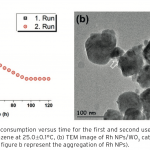 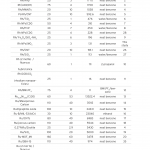 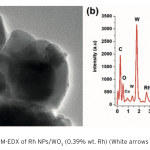 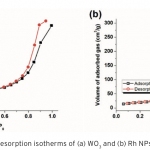 | 465 - 472 |
| Sexual Dimorphism Prediction of Darevskia bithynica (Méhely 1909) from Northwestern Anatolia, Turkey by Using Artificial Neural Network The aim of the study is to predict the gender of Darevskia bithynica by using a feed-forward back-propagation artificial neural network (ANN). Nine morphological characters were used as an input parameters of the model. The gender type male or female is the output parameter. The total number of data is 115. In order to train, validate and test the ANN model 70%, 15% and 15% of the total data are randomly selected, respectively. The regression coefficient (R) values are evaluated as prediction performance. The network’s layer with tangent sigmoid activation functions predicts the lizard gender with R values as 0.98, 0.97 and 0.96 for training, testing and all data, respectively. The mean square error (MSE) values for training and testing data are calculated as 0.0145 and 0.0161, respectively. The obtained results satisfactorily confirm the high ability of the ANNs in predicting the gender of Darevskia bithynica. 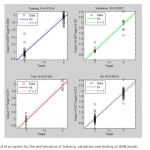 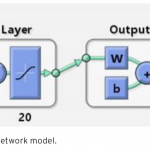 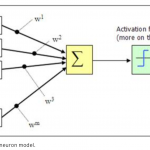 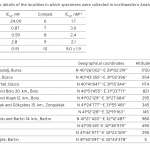 | 473 - 480 |
| Partial Purification and Biochemical Characterization of α-Glucosidase from Corn by Three-Phase Partitioning α-Glucosidase was first purified from corn by three-phase partitioning(TPP) and then characterized. Ammonium sulfate and t-butanol were used in order to obtain three phases. Effect of different process parameters such as; ammonium sulfate concentration, enzyme to t-butanol ratio and pH required for efficient purification of the corn α-glucosidase was studied to get highest purification fold and activity recovery. Optimum purification parameters of the TPP system were determined as 50% (w/v) ammonium sulfate saturation with 1.0:0.75 (v/v) ratio of crude extract: t-butanol at pH 4.5. Under optimized conditions α-glucosidase was purified with 3.8 purification fold and 60% activity recovery. The molecular weight of α-glucosidase was determined approximately as 29 kDa by using sodium dodecyl sulfate–polyacrylamide gel electrophoresis(SDS–PAGE). Characterization studies showed that, optimum pH and temperature of α-glucosidase were pH 4.5 and 55°C, respectively. The purified enzyme was found to be very stable at a temperature range of 25-60°C and a pH range of 3.5-5.5. Kinetic constants (KM and Vmax) were calculated from Lineweaver-Burk plot as 0.64 mM and 0.45 U, respectively. With 10 mM of CaCl2 concentration α-glucosidase activity was significantly increased to 130%. TPP is a useful strategy to concentrate and purify α-glucosidase for its applications. 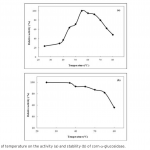 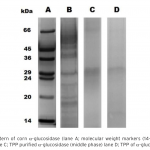 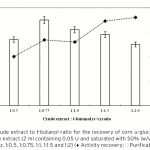 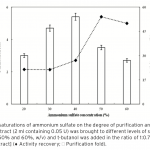 | 481 - 494 |
| Impedimetric Nanobiosensor for the Detection of Sequence-Selective DNA Hybridization 5-amino-2-mercapto-1,3,4-thidiazole (AMT) enriched gold nanoparticles (AuNPs) modified impedimetric sensors were developed for the electrochemical monitoring of sequence-selective DNA hybridization related to Hepatitis B virus (HBV). AMT-AuNP-PGEs presented more repeatable impedimetric responses and provided a suitable surface for more DNA binding onto AMT-AuNPs-PGE surface. The selectivity of DNA biosensor modified with AMT-AuNP was investigated in the presence of target DNA, or the other DNA sequences; e.g, noncomplementary (NC), or mismatch (MM) DNA sequences. The detection limit was calculated as 0.86 μg/mL. 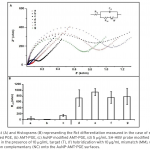 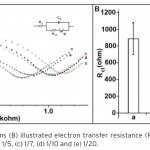 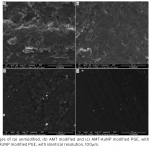 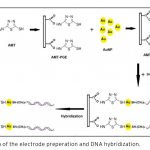 | 495 - 503 |
| Oral Chelation Therapy for Cadmium Poisoning with Cd(II)- MAC Imprinted pHEMAC Nanoparticles In this study, Cd(II)) ions imprinted poly(hydroxyethyl methacrylate-N-methacryloyl-(L)-cysteine methylester) pHEMAC nanoparticles was prepared for the oral treatment of heavy metal poisoning. Cd(II) ions imprinted pHEMAC nanoparticles were characterized by transmission electron microscopy (TEM), Fourier transform infrared spectroscopy (FTIR), zetasizer, and surface area calculations. The efficiency and selectivity of these Cd(II) ions imprinted pHEMAC nanoparticles were investigated both in deionized water and simulated gastrointestinal fluids. Adsorption studies were performed at different pH, temperature and initial concentrations of Cd(II) ions to determine optimum conditions. The selectivity studies were accomplished with Cd(II) ions imprinted and non-imprinted pHEMAC nanoparticles by using different metal ion solutions (i.e., copper, zinc, nickel, and lead ions). Langmuir and Freundlich isotherms were applied for these adsorption studies. 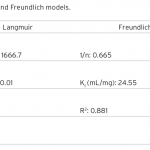 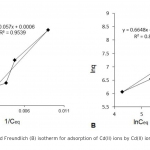 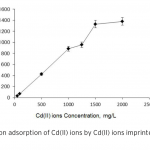 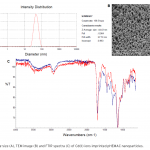 | 505 - 514 |
| 3D and Plasmonic Nanoparticle Decorated Catalytic System via Bio-inspired Polydopamine Coating: Cigar Filter Case Study Despite the significant progress, the well-controlled deposition of nanoparticles onto the support materials having 3D morphologies for the catalytic applications is still facing challenges such as the limited accessibility of reacting molecules to catalyst surface, uncontrolled aggregation of nanoparticles, high cost and highly complicated fabrication procedures. In this study, to overcome these challenges, a simple yet versatile alternative platform is proposed to control the gold nanoparticle (AuNP) size, surface coverage and morphology onto the 3D cigar filter surface via bio-inspired polydopamine (PDOP) coating. The effect of gold deposition time on AuNPs characteristics and their catalytic activity in the model reaction were investigated in detail. It is found that both AuNPs characteristics and catalytic activity can be controlled by changing deposition time. The deposition of AuNPs via functional groups of PDOP such as amine, catechol, and imine provided total conversion of 4-nitrophenol to 4-aminophenol within an hour. 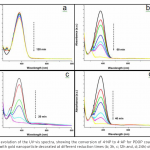 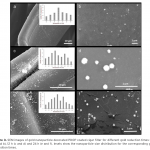 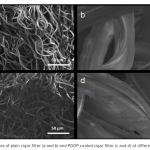 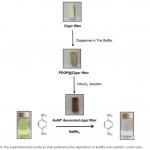 | 515 - 521 |
| Investigation of the Use of Collagen-Gelatin-Gold Nanoparticle Nanocomposite System as an Aptasensor Matrix In this study, a collagen-gelatin-gold nanoparticles (AuNPs) matrix, a material widely used in biosensor applications, controlled release systems, tissue engineering and many other biotechnology fields, was applied to the apta-sensor technology. The matrix was characterized using techniques like scanning electron microscopy (SEM), thermal gravimetric analysis (TGA) and fourier-transform infrared spectroscopy (FTIR). Immobilization conditions were optimized through immobilization of thrombin binding aptamers (TBA) on to the collagen-gelatin-AuNPs surface. Polymer, cross-linker, AuNPs and aptamer concentrations in addition to pH were optimized in the developed aptasensor systems. In addition, re-usability and reproducibility were examined for validation purposes. Thrombin levels as low as 1.97 nM were detected using screen printed carbon electrodes as transducer and Electrochemical Impedance Spectroscopy (EIS) as the electrochemical method. 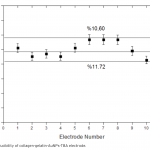 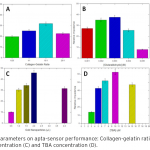 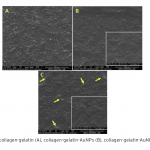 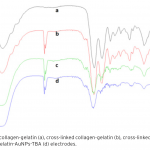 | 523 - 531 |
| Flora of Kemaliye (Erzincan) District This research was carried out in Kemaliye district which about 158 km south-west of Erzincan province. 1800 plant specimens were collected from the area between 2005-2007. Identification of the specimens revealed the presence of 640 taxa belonging to 318 genera in 80 families. Cryptogamae includes 4, Spermatophyta includes 636 taxa (Gymnospermae 3, and Angiospermae 633 taxa). 36 taxa are new records for B7 square. A total of 118 taxa determined in the research area (18,43%) are endemic for Turkey. The scattering ratios of the taxa for the phytogeographical regions are as follows: Irano-Turanian elements are 252 taxa (39,37%), Mediterranean elements are 34 taxa (5,31%), Euro.-Sib. elements are 32 taxa (5%), widespread or other taxa which their regions unclarified are 322 (50,31%). 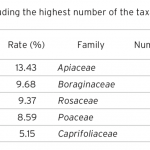 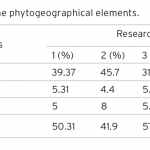 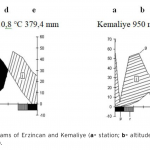 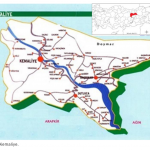 | 533 - 557 |
| A Geometric Morphometric Analysis for Ranid Taxonomy: Chondrocranial Shape Variation of Five Ranid Species (Anura: Ranidae) Alandmark-based geometric morphometrics of the dorsal view of the chondrocranium was analysed for 188 specimens to investigate the hypothesis of species shape and size differences among Rana tavasensis, R. macrocnemis, Pelophylax ridibundus, P. bedriagae and P. caralitanus. Canonical variate analysis (CVA) is applied to determine whether the shape and size differences in the chondrocranium of five ranids can be used to classify those at a taxonomic level. The result of CVA analysis shows that five ranid species examined here discriminate as mountain (Rana sp.) and water (Pelophylax sp.) frogs. In discriminant function analysis (DFA), each pair of species was analyzed and the results show that there is no interspecific shape difference among Pelophylax species. However, the interspecific shape variations in the cornua trabeculae, articular process of the palatoquadrate and processus muscularis quadrati, were present between Rana species (R. macrocnemis and R. tavasensis). 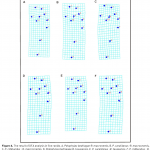 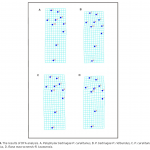 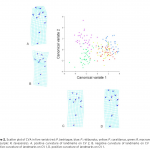 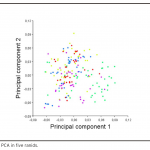 | 559 - 567 |
| Sodium Hypochlorite Provokes Stress Response in Rainbow trout: Variation in Blood Parameters as an Ecotoxicological Indicator of Freshwater Contamination In this study we analyzed the effects of NaOCl solution on blood hematological and biochemical parameters of the rainbow trout Oncorhynchus mykiss (Walbaum, 1792). The treatment lasted for three days with prior dechlorination of the water. Significant differences in the concentration of K+, Ca2+, Cl-, proteins, glucose were detected and the largest variations were found for creatinine concentration (P<0.05). Significant differences were found for PCV, Hb concentration, RBC, WBC, MCH, MCHC, LYM (%), SEG (%) and NEU (%) values (P<0.05). Small doses of NaOCl alter the acid-base balance, suggesting a very low-level adaption in the rainbow trout. 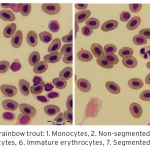 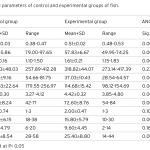 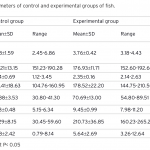 | 569 - 575 |
| Adsoption of Cationic Dye on Anionic Hydrogel and Its Second Use for Drug Delivery with Antibacterial Properties In this work, a novel stimuli-responsive p(EPMA-co-AMPS) hydrogels containing 2,3-epoxypropylmethacrylate and 2-acrylamido-2-methyl-1-propanesulfonic acid were prepared through free radical copolymerization. In addition to the swelling properties of the obtained hydrogels, surface morphology, chemical and mechanical properties are fully characterized using SEM, FTIR and TPA. Firstly, resulted hydrogels were carried out for removal of cationic dyes from aqueous solution in environmental applications. The adsorption isotherms and kinetics of hydrogels were in good agreement with Langmuir equation and the pseudo-second-order equation, respectively. In addition, the adsorption capacity of p(EPMA-co-AMPS) hydrogels compete with other currently reported adsorbents. Secondly, the use of hydrogel for controlled drug release studies in biomedical applications has been investigated as a drug carrier. Finally, drug-loaded hydrogels were tested for antibacterial activities against Gram‐positive bacteria (Bacillus cereus) and Gram‐negative bacteria (Salmonella typhimurium) and demonstrated antibacterial activity. Results obtained from this study suggest that the resulted hydrogel could be promising materials for various applications. 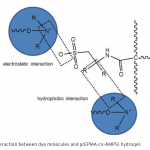 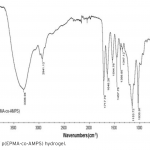 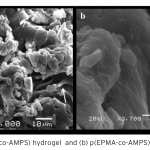 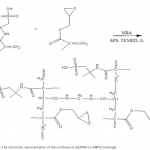 | 577 - 591 |
| Cobitis fusunae, A New Spined Loach Species (Teleostei: Cobitidae) from the Sultan Marsh, (Kayseri, Turkey) Cobitis fusunae is a new species described from the Sultan Marshes, Kayseri Province, Turkey. This species differs from the congener species of Central Anatolian basins by the combination of the following characters (none unique to the species): No black spot on caudal-fin base, having Z4 with dark-black stripe, pigmentation below Z4, merged Z1-Z3 postdorsally, 12-18 small mid dorsal blotches and one lamina circularis in males, two fixed, diagnostic nucleotide substitutions in the mtDNA COI barcode region, and a minimum K2P genetic distance of 5.4%. 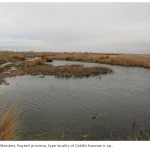 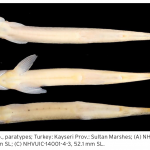 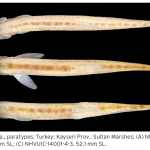 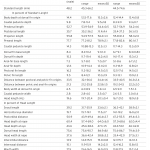 | 593 - 599 |
| A Reassessment of the Conservation Status of Aphanius sureyanus (Neu, 1937) (Cyprinodontiformes:Aphaniidae) and the First Data on its Reproduction in Captivity Aphanius sureyanus (Burdur Killifish) is endemic to the Burdur Lake, in South-western Turkey. In this paper, the current conservation status of the species is briefly reviewed and presented based on the available data and recent observations. Aphanius sureyanus is assessed as “Endangered” (EN) in the IUCN Red List of Threatened Species. It has been suggested that the major threats to the species are desiccation of Burdur Lake, as well as increasing salinity and pollution. The findings pointed out an ongoing trend towards irrecoverable habitat loss and population decline. Therefore, the IUCN threat category of the species is recommended to be re-assessed as Critically Endangered (CR). Some parameters on the reproduction of the species in captivity is also provided for the first time. Females deposited four to six adhesive eggs into moss-shaped mops per day. The egg diameter was ranged between 1.25 and 1.50 mm with an average ±SD of 1.37 ±0.09 mm. 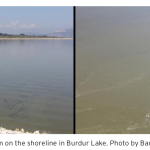 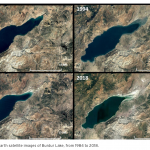 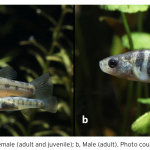 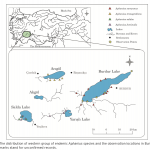 | 601 - 607 |
| Investigation of Thermal Behaviors of Poly(3-Chloro-2- Hydroxypropyl Methacrylate) modified with Amine-Rich Groups Poly(3-chloro-2-hydroxypropyl methacrylate) (p(HPMA-Cl)) microgels were synthesized through surfactant-free emulsion polymerization technique (SFEP) by addition of ethylene glycol dimethacrylate (EGDMA) as a cross-linker. Next, the obtained p(HPMA-Cl) microgels were modified by using tris(2-aminoethyl)amine (TAEA) and poly(ethyleneimine) (PEI) as modifying agents. After modification, the synthesized microgels were named as poly(3-chloro-2-hydroxypropyl methacrylate)-tris(2-aminoethyl)amine (p(HPMA)-TAEA) and poly(3-chloro-2hydroxypropyl methacrylate)-poly(ethyleneimine) (p(HPMA)-PEI) microgels. Thermal decomposition kinetics of these microgels which were based on the p(HPMA-Cl) were then evaluated using thermo-gravimetric analysis. The kinetic parameters for the degradation reactions of p(HPMA-Cl)-based microgels, including the correlation coefficients and activation energy and mechanisms, were determined using the TGA-DTA data. Experimental data for p(HPMA-Cl), p(HPMA)-TAEA and p(HPMA)-PEI microgels were computed through twenty-four different thermal degradation models to evaluate the best-fitted model. The activation energies (Ea) of p(HPMA-Cl), p(HPMA)-TAEA and (p(HPMA)-PEI) microgels composites were determined by the Kissinger-Akahira Sunose (KAS), Flynn-Wall-Ozawa (FWO), Coats-Redfern, Ozawa and Friedman methods. Based on the results, nucleation-nuclei growth models seem to be the most suitable for these microgels. 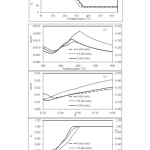 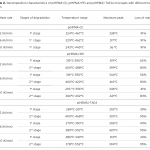 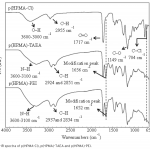 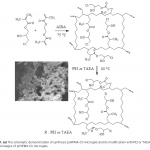 | 609 - 627 |
| Antioxidative, Antiproliferative and Antiangiogenic Activities of Nigellasativa L. pulp, a Waste Material Remaining from Oil Production The aim of this study was to investigate the biological activities such as antioxidative, antimetastatic and antiangiogenic properties of the Nigella sativa L. (NS) pulp, which is a waste material of the oil production process. Following the investigation of the characteristic properties of NS pulp extract with UV-visible (UV-vis), fourier-transform infrared (FTIR) and gas chromatography-mass spectroscopy (GC-MS) measurements, its antioxidative capacity was determined using 2,2-Diphenyl-1-picrylhydrazyl (DPPH) and Trolox equivalent antioxidant capacity (TEAC) assays. Antiproliferative effects of the pulp extract were tested on both cancerous and non-cancerous cells to examine whether the effects are specific to cell types. Antiangiogenic tests were performed via chick chorioallantoic membrane (CAM) assay. The results showed that the NS pulp extract still maintained its radical scavenging effects and reduced the proliferation of cancer cells more efficiently compared to non-cancerous cells. Furthermore, CAM assays demonstrated that the pulp extract effectively limited vascular endothelial growth factor (VEGF)-stimulated vascularization and development. NS pulp might be used for the suppression of the metastatic cell populations and for the treatment of the diseases particularly like cancer, which progress with pathological angiogenesis. This study highlights that such waste materials from plants can be recycled with various uses in many fields. 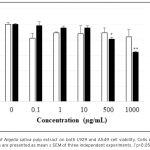 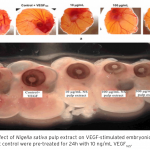 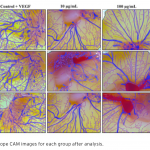 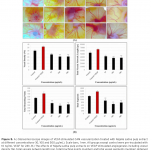 | 629 - 642 |